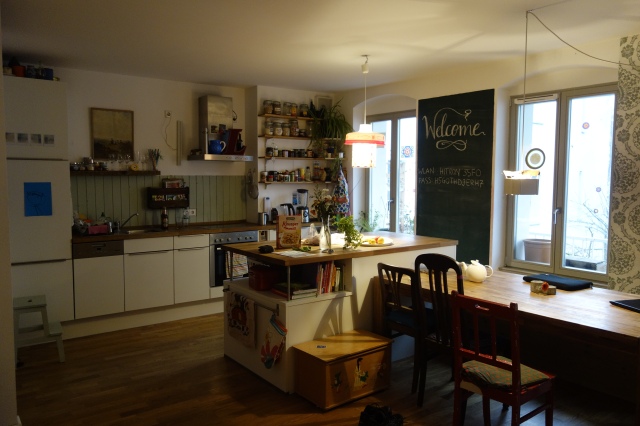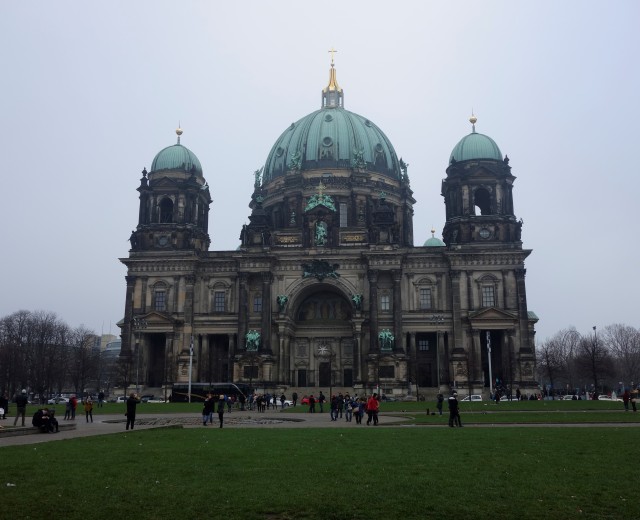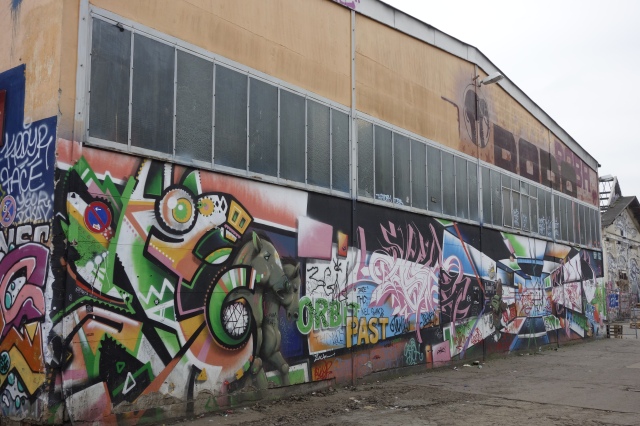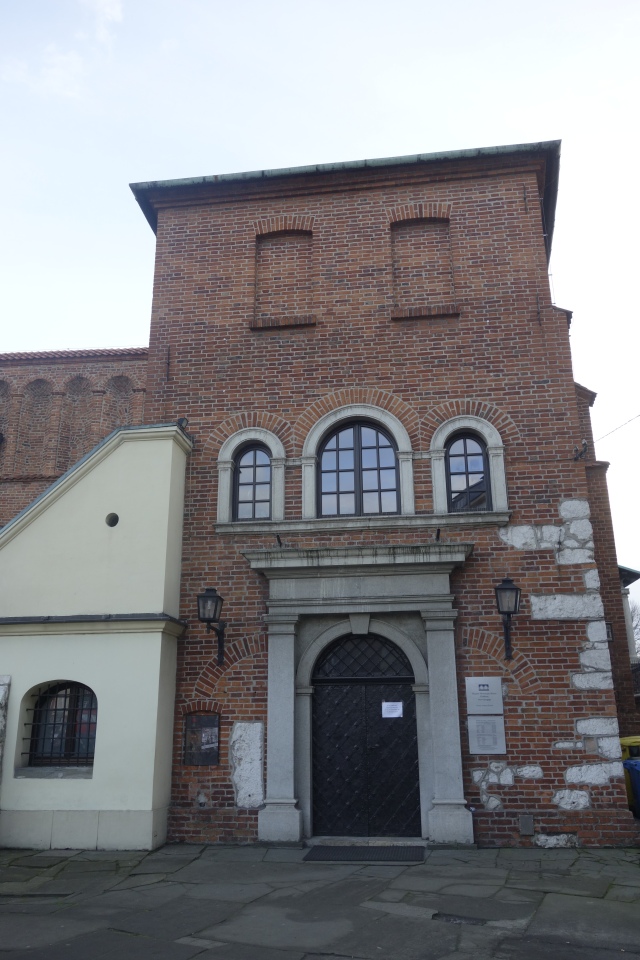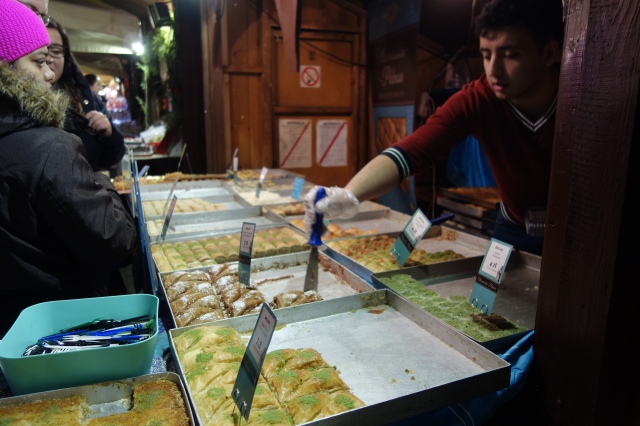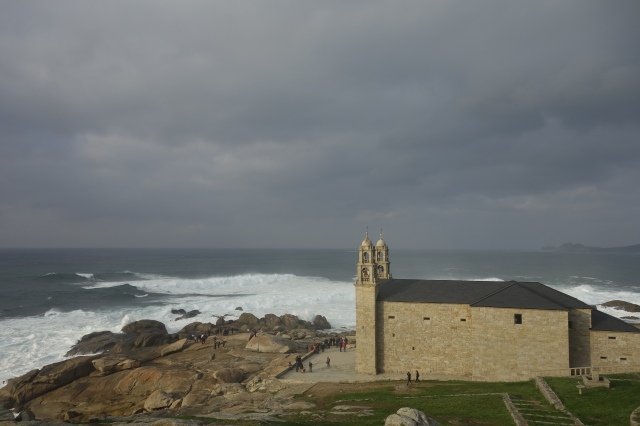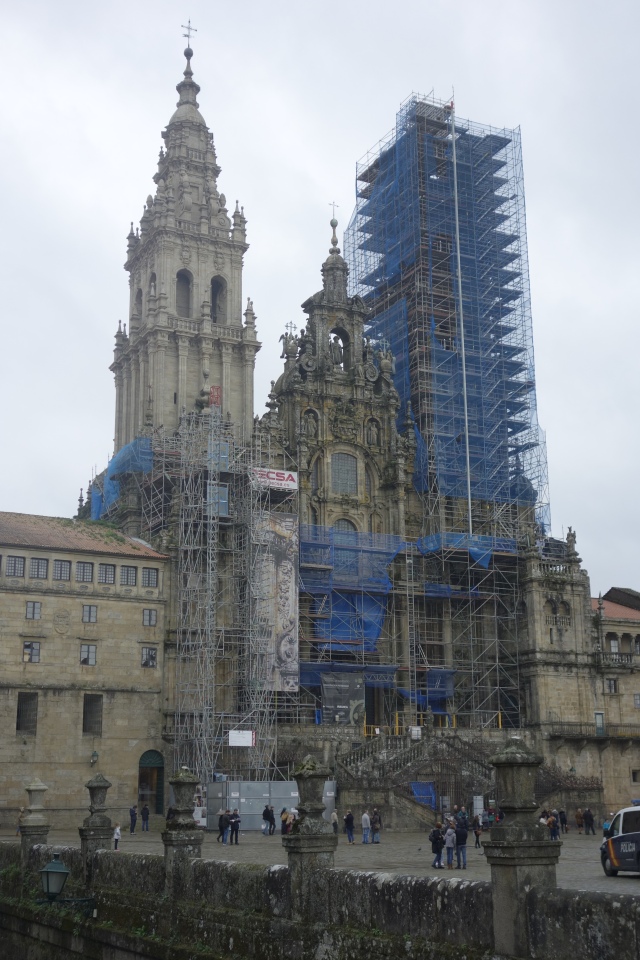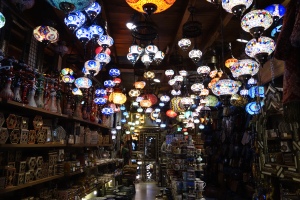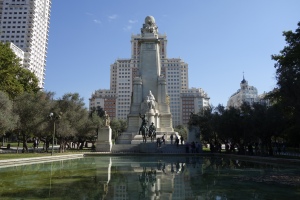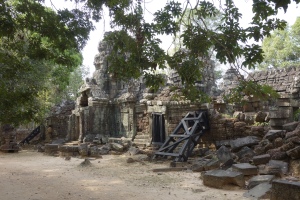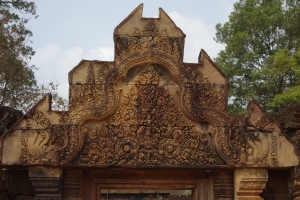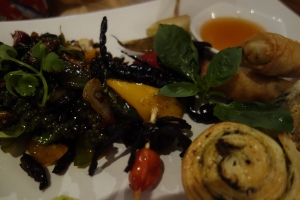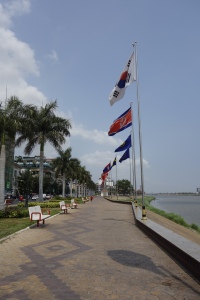As our bus lumbered south towards Munich, I was pleasantly surprised to see the gray, overcast weather give way to snow-covered landscape. Although the weather was warmer as expected, I didn’t foresee snow being a part of the equation. The farther south we drove from Berlin, the more interesting the landscape became. Flat, undeveloped land slowly became hillier, and dotted with villages and estates.
It was immediately clear that Munich was much smaller than Berlin. In Munich, all of the metro, bus, and trains are centralized around a main station that was only a five-minute walk from our hostel, making it incredibly easy to get around. In Berlin on the other hand, there are several different major transportation hubs scattered throughout the center so that it sometimes took around an hour to navigate between them.
After arriving at our hostel, we decided to go to a brewery. Since Munich proclaims itself the “beer capital of the world”, I had very high expectations. In addition, the breweries in Poland had impressed me so much that my expectations for German beer became further elevated as a result.
After inquiring at the front desk of our hostel, we got a fairly comprehensive list of breweries to check out. On the first night we decided to head to a microbrewery called Giesinger Brau, which our hostel receptionist had proclaimed as having the best beer in Munich.
After taking the metro and wandering through a mostly vacant area, we found Giesinger Brau. Unfortunately, their kitchen was already closed, but we decided to have some beers anyway. Before we ordered we were approached by a very inebriated German woman who swore to us that this was the best beer in Munich, which seemed like another great sign.

We ordered a flight (a small sampling of five beers), before ordering individual pints. The beer was fine, but nothing remarkable or interesting. I was honestly very disappointed; if this was supposed to be the best beer in Munich, then what were the other breweries like? After several beers, we got a quick bite before heading back to the hostel.
The next day we headed to Neuschwanstein Castle. Being a two-hour train ride away, we woke up fairly early and groggily got onto the train. The ride was very nice and relaxing, and as we came closer to the Bavarian Alps it began to snow.
The train unloaded everyone in a town a few miles from the castle, so we all piled onto buses to be dropped off at a village near the base of the castle. As the bus approached the village, Neuschwanstein became visible – looming over everything amid snow-dusted mountains. In many ways, the first sight of the castle was the most breathtaking, as it looked exactly like a scene out of a snow globe.
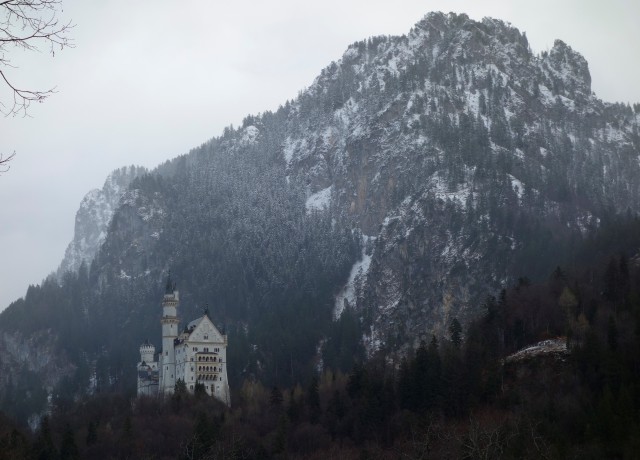
After we were dropped off in the village we piled into an enormous line to buy entry tickets. I had not realized that the Hohenschwangau Castle was also within sight of the village, along with a museum about former Bavarian Kings. Nonetheless, we decided to simply buy tickets for Neuschwanstein, as the others did not seem interesting enough to justify the elevated price.


After waiting in line for an hour, we finally got our tickets. Unfortunately, the soonest entry time to the castle was at 4 PM, and it was only noon. Wet and cold from standing in line for an hour in the snow, I was less-than-happy with the news. To kill the time, we wandered around the small village, which was predictably full of overpriced restaurants and stores with touristy trinkets, before finding a bratwurst stand.
We somehow managed to pass the rest of the time by walking around the whole area and checking out the outside of Hohenschwangau Castle. As our entry time approached, we hiked up the hill to the castle and queued for our tour.
The closer we came to the castle, the less impressive it looked. Although it is definitely beautiful architecturally, it is much different than I had expected. It looks and feels very new, and given its completion in the late 19th century, it feels much more like a mansion or palace designed to resemble a castle, than an actual castle. Nothing about it felt rugged or militaristic to me, and its fairy-tale like atmosphere made it feel much more like the fantasy of an eccentric millionaire than a medieval castle.

The interior was even more bizarre and fantastical. King Ludwig II, the king who built the castle, was obsessed with the composer Richard Wagner, so many of the rooms were painted with murals depicting various scenes from Wagner’s operas. I had heard the interior of the castle was less-than-impressive, and I certainly agreed.
After finishing the tour, we quickly scurried back towards the bus and then onto the train, happy to be getting out of the snow and returning to Munich.
That night we decided to go to the Paulaner brewery. Again, the brewery was interestingly situated in an otherwise vacant part of town.
Built in the traditional beer hall style, it was nearly empty when we entered. We received a very cool reception, as several of the waiters clearly saw us yet made no move in our direction. I finally flagged a waiter down, who seemed immediately resentful.
As we were being seated, he handed us menus and said something about the food. I immediately explained that we were only ordering drinks, which immediately caused him to pull the menus away. I asked for a drink menu, which he scoffed at and replied, “We serve beer. Normal types of beer”.
To recap, this brewery was almost empty, our waiter seemed angry with us for no reason, and he had no menu explaining the beer selection (did I say this was a brewery?). Looking back, I should’ve just taken the obvious hints and left, but we were already there so we decided to order beers anyway.
As we talked and drank, I put the moody waiter out of my mind, which wasn’t too hard as he didn’t return to attend to us. Finally, he returned some time later to give us our check. He turned to me and asked if he could ask me a question. It’s never a good thing when something wants to “ask you a question”, but I thought for a second that maybe I had misread him, and he was making a last, futile attempt to be friendly.
He asked where I was from. His (somewhat clever, extremely passive-aggressive), follow-up was, “They tip in California don’t they?”. Wow… even in the U.S. where we always tip, I have never had someone ask so bluntly for a tip. On top of that, this was literally the worst service I have ever had. Even if I had been in California I would not have tipped him, or would have given him the absolute minimum tip and then notified the manager. Needless to say, I didn’t tip him, but proceeded to get out of there as quickly as possible before he tried to shank me in the parking lot.
Still somewhat frazzled the next day, we decided to take another free tour. Perhaps my expectations were too high given how much I had enjoyed the alternative tour in Berlin, but I was excited for the tour of Munich. I even explained to our guide my interesting tipping experience before the tour, looking for reassurance that I had been in the right (she concurred that I was).
However, I felt a creeping anxiety as she began explaining that although the tour was free, we basically had to tip. Uh oh, is this some form of weird déjà vu? She had literally just told me that in Europe tipping was not “a thing”, and this was nonetheless a “free” tour. I understand the point, if a free tour is very interesting and informative, I will gladly tip (as I did after the alternative tour in Berlin), but I do not see tipping as an obligation (otherwise why advertise it as a ‘free’ tour?).
I nipped my concerns away, and decided to enjoy the tour. Most of the city had been predictably destroyed during WWII, and then rebuilt to replicate its historical style. We walked around the center very quickly as it only covered a small area, and saw the famous cuckoo clock in the new City Hall which was comically out of tune.



The tour itself was decent; our guide tried a little too hard to be funny and oversold her jokes, making it obvious she said the same spiels every time but at least she was trying to make it enjoyable.

However, the end of the tour was amazingly awkward. Our guide made a horrible joke that most of us did not even realize was a joke, then remarked about the lack of laughter and that the tour was over.
She asked for tips, and it was clear looking at the group that all tips were given begrudgingly. I realized I only had big bills, so I asked Ben if I could unofficially split his tip. He had a €5 note which I thought was a reasonable tip between the two of us. The tour had not been too long, and I felt like we were tipping more out of obligation than because we enjoyed the tour. As Ben gave the guide our tip, she gave us a dirty look, confirming my initial suspicions.
Again, I felt frazzled by the weird reception to tipping. My concept of tipping in Europe is normally very clear; tipping is not a normal custom, so I do not feel obligated to tip unless I receive good service. That being said, I have still tipped at a number of different places, so it was bizarre to encounter this forceful push to tip even for poor or abysmal service that I have only ever encountered in Munich.
Nonetheless, being our last night in Munich, we decided to go to Hofbrauhaus (HB). Hofbrauhaus is easily the most-trafficked beer hall in Munich, and I was hoping to have a better experience there than at the previous places we had visited.

Thankfully, I actually enjoyed the HB beer hall. Our waiter was surprisingly nice and helpful despite the crowded atmosphere, and we promptly received giant liter mugs of beer.


It was interesting to see the various giant platters of Bavarian food rotating around the hall, but having already eaten we simply watched the plates go by. Thinking back on the horrible service we had received, I made a note of giving our waiter a generous tip as he managed to be attentive and friendly even given the large crowd.
After a few beers, we left and headed towards another beer hall that served beer brewed at a nearby monastery. Fortunately, this brewery ended up being my favorite in Munich by a long-shot.
The brewery, Kloser Andechs (Andechs Abbey), had been brewing beer since 1455. Their wheat beer was particularly delicious, and was the only great beer I had in Germany.
Given its history and current status as “beer capital of the world”, Munich left something to be desired. I find that self-proclaimed title disingenuous at best, especially given the complete lack of variation in beers due to the city’s old, archaic beer purity law. In my opinion, a much better title for the city would be the “historic beer capital of the world”.
The beer issue aside, the sights outside of Munich seem very beautiful, but the city was a bit disappointing.
Altogether, the trip was much different than I had been expecting. Since it was primarily my idea to go to Germany, I had high expectations for Germany, but basically no expectations for Poland.
Because of this, Poland completely surprised me and I really enjoyed everything about it. Its history was very rich and interesting, the food was somewhat unique, and the beer was great. Even though the people were generally unfriendly, I could usually laugh it off as it was mostly the “don’t talk to me” unfriendliness (rather than direct rudeness, like we experienced in Munich).
In contrast, Germany was pretty disappointing. While I enjoyed some things, like the alternative tour in Berlin and some of the breweries, the cities lacked charm and the sites didn’t impress me as much I had been expecting. While I did encounter some very rude, horrid people, I also encountered many very nice, incredibly helpful people.
Looking forward, I feel satisfied with what I saw in Germany and can say that I don’t feel any need to return anytime soon. I am also satisfied with what I saw in Poland, but enjoyed it so much that I could visit again.
For me, this trip also reasserted the importance of having a good travel companion. Besides the numerous, obvious advantages of traveling with someone, a good travel companion encourages you to see places you wouldn’t have wanted to on your own, to try different foods, to do different things, and to venture outside of your comfort zone. I have been lucky to find such a great travel companion in Ben, as he has certainly added many different layers and insights to my travels.

